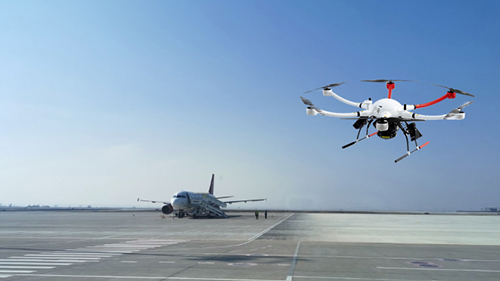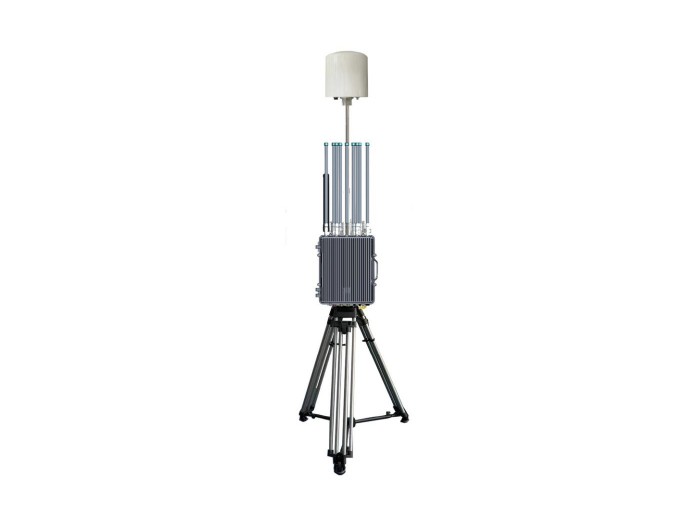UAV Interceptor 6x6: The Future of Aerial Defense Technology
As drone usage continues to skyrocket across various industries, the challenge of intercepting unauthorized UAVs presents a significant user problem. Commercial, governmental, and military entities are facing increasing security threats from rogue drones, necessitating innovative solutions. The rising trend of UAV interceptor 6x6 technology is a direct response to these threats, marrying mobility and defense capabilities to form an adaptable aerial intercepting vehicle. With the urgency for advanced aerial security mechanisms, the demand for UAV interceptors that can swiftly adapt to a variety of environments is higher than ever.
Defining UAV Interceptor 6x6 Technology
The UAV interceptor 6x6 represents a broad category of unmanned aerial vehicle technology designed to intercept and neutralize rogue drones. The term '6x6' refers to the vehicle's wheel configuration which allows for increased mobility on diverse terrains, enabling interception capabilities in both urban and rural landscapes. According to industry reports, the global drone market is expected to surpass $40 billion by 2025, amplifying the need for efficient interception solutions. The 6x6 UAV interceptors are typically equipped with advanced radar systems, corrosion-resistant materials, and endurance capabilities that enable prolonged surveillance and rapid deployment.
Key Features of UAV Interceptor 6x6
One of the primary features that set UAV interceptor 6x6 technology apart is its adaptability. The platform can integrate various systems such as net guns, jamming systems, or even kinetic capture mechanisms tailored for specific interception missions. For instance, systems like NetGun enable a non-destructive neutralization of hostile drones, making them ideal for airports and high-security zones. The mobility of the 6x6 base also contributes significantly; a well-classified study revealed that systems capable of traversing diverse environments outperform stationary setups by 30% in intercepting unauthorized UAV activity. The data indicates that geography and obstructions play a critical role in drone intercept success rates, which UAV interceptor 6x6 addresses effectively.
Benefits of Utilizing UAV Interceptor 6x6 Solutions
Adopting UAV interceptor 6x6 technology delivers multiple benefits that enhance aerial security measures. Firstly, the mobile base allows for swift relocation and agility in dynamic response situations, crucial for effectively managing drone incursions. This is not just theory; a successful deployment by [Company Name] at [Event] demonstrated the 6x6 interceptor's ability to adapt its base of operations in under 15 minutes during live scenarios.
Secondly, a comprehensive integration of detection systems ensures comprehensive situational awareness. The effective fusion of radar and visual detection mechanisms minimizes the chances of false alarms, a primary concern in the operational efficiency of existing UAV defense measures. Furthermore, this technology fosters interoperability, allowing collaboration between different sectors such as governmental bodies and private companies striving for effective drone management.
Applications and Deployment Scenarios
The applications for UAV interceptor 6x6 are broad, spanning military, law enforcement, and even commercial sectors. In military contexts, interceptors are deployed to protect sensitive installations or during conflict situations. It was reported at [drone event or military exercise] that the deployment of a UAV 6x6 system reduced unauthorized drone incursions by 40%. This stat clearly emphasizes the effectiveness of moving towards a more proactive drone defense strategy.
In law enforcement, these interceptors can assist in real-time monitoring of public events, providing law enforcement agencies with tools to mitigate threats from hostile drones. Additionally, the commercial sector has begun incorporating UAV interceptors in securing parameters around critical infrastructure such as airports and stadiums, ensuring public safety.
Trends Fueling the Growth of UAV Interceptor 6x6 Technology

Several trends are shaping the landscape of UAV interceptor technology. The regulatory framework surrounding drone usage is evolving, pushing manufacturers to innovate rapidly. Governments across the globe are enacting laws that require stringent security measures to prevent drone misuse. With this, organizations are increasingly interested in investing in versatile UAV solutions. Moreover, the emergence of AI-powered systems within 6x6 interceptors is set to enhance the target recognition process, significantly reducing human error and allowing for faster decision-making. A study by [Research Institute] indicates a projected increase in AI integration of 60% in aerial defense technology in the next five years.
Recommendations for Organizations Considering UAV Interceptor 6x6 Solutions
- Conduct a comprehensive assessment of your current aerial security needs to determine how a UAV interceptor 6x6 solution would fit into your strategy.
- Engage with experts in UAV technologies to understand the various systems available and their respective functionalities.
- Invest in training programs for your staff to ensure seamless integration and operation of UAV interceptor systems.
- Collaborate with regulatory bodies to remain updated on emerging laws regarding drone use, securing your interception measures accordingly.
- Consider visiting our website for more details on UAV solutions tailored for your specific needs or contact us for professional consultation.
Conclusion
The UAV interceptor 6x6 technology represents a forward-thinking approach to aerial security, merging mobility with innovative interception tactics. As threats from unauthorized drones continue to grow, investing in UAV interceptors is no longer a luxury but a necessity. For organizations seeking to enhance their aerial defense capabilities, expert guidance is the first step. Contact us today for a free consultation or visit our website now to explore more about our UAV interceptor solutions.
















